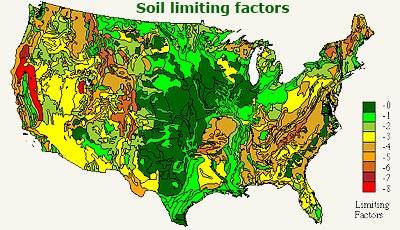Where Is The Best Place To Live?

So, you want to know where is the best place to live in the United States? I recently received an email with this question, which included criteria ‘where water is good’, ‘hunting’, ‘not too cold or hot’, ‘good soil’, ‘etc,,,’. The person is relocating in a year, which is good in that there is plenty of time to figure it out.
The person is definitely on the right track in the process of determining their best place to live, because he is establishing criteria. This is the key! You must think it through, and not quickly. Take a long time to establish your criteria because you will not think of it all in one sitting, or even a few. During each ‘thought’ session, write down the results. It is important to write it.
Although the ‘etc,,,’ in the short criteria list is a huge gaping hole, at least the person started with several. Let’s look at them now…
Where the water is good. I suppose that ‘good’ is subjective. Lots of municipalities have ‘good’ water or good-enough water because they treat it. If you are looking for an abundance of water, there are states and regions that are more beneficial. Minnesota and Wisconsin have more than 10,000 lakes each – but many of them are iced over during their cold winter months. Most of the eastern half of the country is loaded with rivers and streams while the western half definitely has fewer – although still plenty if you choose it.
The following map shows streams and water-bodies of the US, as well as areas of high arsenic concentrations in the surface ground water.

You may be concerned about water aquifers or drought conditions too.
From a survival preparedness standpoint, I would try and find a location that has a water source on the property like a stream, spring, or pond (or underneath, as in a decent and reliable well). Most all homes depend upon the municipal systems to supply water. It may be good insurance to have your own source too.
Hunting. About one-third of the nation is forested (currently about 747 million acres). Although there is game to be hunted beyond the forests, the following map of the United States forest cover (various types of forest trees are different colors on the map), shows locations (the forests) which will be more ideally suited towards hunting than non-forested areas.

Not too cold or hot. This too is subjective. Some people prefer the cold to the heat or vice versa. Equally important are the temperature effects on the growing season, which is typically high on the list of priorities of self-sufficient survival-preparedness minded folks. The following map shows the maximum and minimum temperatures of the United States. July is chosen for the maximum temp. while February is chosen for the minimum.

Good soil. Arable land is land that can be used for growing crops. There are vast parts of the United States that have poor soil for growing foods (desert and dry regions) without ‘help’ from us humans with things such as irrigation, treatment, etc. There are also many parts of the country that will grow food just fine, and have adequate natural rainfall to keep them growing. All soils require good management and replenishment, so even if you start with something good, be sure to treat it right with crop rotation as well as organic replenishment of nutrients. There’s lots of science as well as learning by trial-and-error to gardening…
The following map shows soil classified by their number of ‘agronomic’ limiting factors (green is better). The best soils for agriculture have no or few limiting factors.

There are many, many additional factors that will go towards your decision of the best place to live, including, population density, taxes, political views and state laws, cost of living, price to purchase, crime, hazards and risks such as earthquakes-tornadoes-hurricanes-flooding, etc.
The few factors touched upon here will hopefully set you off in the right direction of doing your research. First though, it is imperative that you write down the things that are important to you. This will help you more than you may realize…
If you enjoyed this or topics of emergency preparedness, or are planning for disaster,
Read our current articles on Modern Survival Blog
